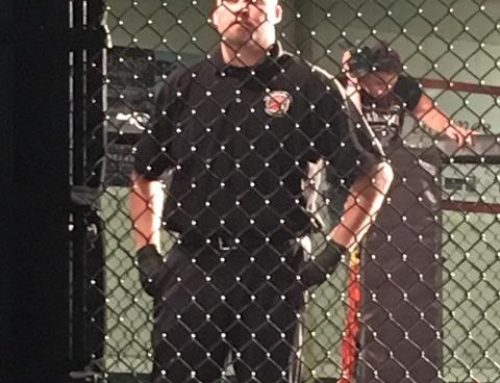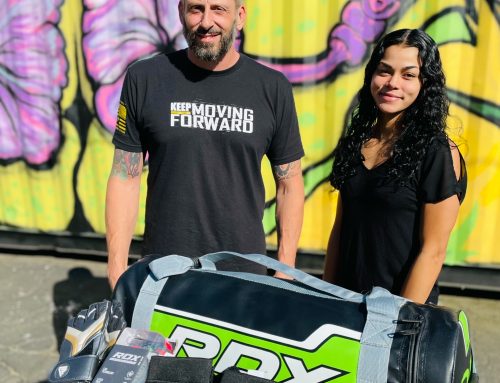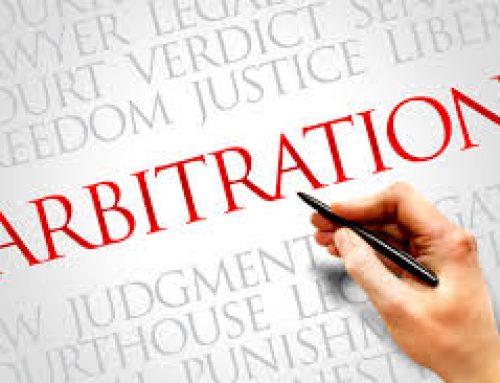The following article by UMMAF Board of Directors member, Dr. Randa Bascharon provides guidance to club owners on the best practices available to sanitize their club and to provide reassurance to their membership that their club is a safe place to train.
Recommendations for Best Disinfectant Practices in Combat Sports
The environments in which athletes compete, practice, receive therapy for injuries, and travel, both domestically and internationally, provides varied opportunities for the transmission of infectious organisms. Contact sports are particularly vulnerable.
A study by Turbeville et al reported 59 outbreaks of infectious disease in competitive sports from 1966 to 2005. Infection can be spread by skin-to-skin contact or through fighting gear and mats (fomites). Pathogens associated with wrestling injuries include bacteria, viruses, and fungi. Bacteria include Staphylococcus aureus and Streptococcus pyogenes that result in infections, such as impetigo, folliculitis, erysipelas, and furuncles. Viruses, such as herpes simplex, cause contagious rashes, and fungi, such as Trichophyton and Epidermophyton, cause ringworm. Although athletes with visible skin infections should not participate in the competition, considerable evidence has suggested that skin-to-skin transmission and fomite transmission still occurs during meets.
The Centers for Disease Control has established many guidelines cleaning and sanitizing public facilities. The following is a stepwise approach to prevention.
Screening of Staff, Coaches, and Athletes
1. Any individual who is sick or ill must not participate in training or competition due to the potential for spread and safety issues to all in contact, including compromise to the athlete.
2. Many sources recommend influenza vaccinations.
3. Any skin lesions or potential skin infections should be cleared by a physician before participating in training or competition, as skin to skin, mats, and gear are primary manners for infection transmission.
4. Encourage showering after a competition, proper hygiene with antibacterial soap, and easy access for sanitation surrounding the training and competition area.
a. There are many products such as wipes and foams designed to protect athletes during training and competition, and at times where showering is not possible.
b. Many companies can provide sanitation dispensers for training facilities so they can be accessible to individuals.
5. All gear should be for individual use. Equipment should not be shared. Sanitation of any shared gear or training items that contact the skin is mandatory.
6. Water bottles and food products should be for an individual. Eating food around highly infectious areas such as bathrooms, training mats, and high traffic training areas should be prohibited.
7. Hand washing is essential after the use of the bathroom. Infections transmission occurs from areas of contact such as door handles, gear, mats, shoes, and restrooms. Therefore, easy access to hand sanitizer, sanitation body wipes is critical in the safety process.
Protecting your athletes
The CDC lists five steps to take if you think an athlete might have a skin infection:
1. Refer athletes with possible infections to a healthcare provider such as a team physician, athletic trainer, school nurse, or primary care doctor. If the athlete is younger than 18 years old, notify parents/guardians about the possible infection.
2. Instruct the athletes with a potential or confirmed staph infection or open wound to avoid using whirlpools or therapy pools not cleaned between athletes. Athletes with skin lesions should avoid other common-use water facilities like swimming pools until infections and wounds resolve.
3. Review and implement cleaning and disinfecting guidance.
4. Educate athletes about ways to prevent spreading the infection. Make sure supplies are available to comply with prevention measures, including bandages for covering wounds and a proven antiseptic cleanser such as Hibiclens in the shower and at sinks.
5. Consider excluding the athlete from participation until evaluated by a healthcare provider.
General Recommendations for Routine Cleaning and Disinfection of Equipment and Facility
1. Clean the facility daily.
2. Mats and gear are considered an area of high transmission. Mats should be cleaned and mopped backward so that the regions are not re-contaminated. Wear shoe covers on the training areas and mats.
3. Cleaning refers to the removal of germs, dirt, and impurities from surfaces. It does not kill germs, but by removing them, it lowers their numbers and the risk of spreading infection.
4. Disinfecting refers to using chemicals, for example, EPA-registered disinfectants, to kill germs on surfaces. This process does not necessarily clean dirty surfaces or remove germs. Still, by killing germs on a surface after cleaning, it can further lower the risk of spreading infection.
5. Community members can practice the routine cleaning of frequently touched surfaces. For example, tables, doorknobs, light switches, handles, desks, toilets, faucets, sinks, and electronics cleaners and EPA-registered disinfectants that are appropriate for the surface, following label instructions. Labels contain instructions for safe and effective use of the cleaning product. Labels include precautions you should take when applying the product, such as wearing gloves and making sure you have proper ventilation during the use of the product.
6. For electronics follow the manufacturer’s instructions for all cleaning and disinfection products. Consider the use of wipeable covers for electronics. If no manufacturer guidance is available, consider the use of alcohol-based wipes or spray containing at least 70% alcohol to disinfect touch screens. Dry surfaces thoroughly to avoid the pooling of liquids.
How to clean and disinfect
Wear disposable gloves to clean and disinfect.
Clean
Clean surfaces using soap and water. Practice routine cleaning of frequently touched surfaces.
High touch surfaces include Tables, doorknobs, light switches, countertops, handles, desks, phones, keyboards, toilets, faucets, sinks, etc.
Disinfect
Clean the area or item with soap and water or another detergent if it is dirty. Then, use disinfectant.
Recommend use of EPA-registered disinfectant. The following is a resource to check for products: Visit https://www.epa.gov/pesticide-registration/list-n-disinfectants-use-againstsars-cov-2 to find the current list of products that meet EPA’s criteria for use against SARS-CoV-2, the cause of COVID-19.
Follow the instructions on the label to ensure the safe and effective use of the product.
Many products recommend:
• Keeping surface wet for the recommended time (see product label)
• Precautions such as wearing gloves and making sure you have proper ventilation during the use of the product.
• Use diluted household bleach solutions if appropriate for the surface. Check to ensure the product is not past its expiration date. Unexpired household bleach will be effective against coronaviruses when properly diluted.
• Follow the manufacturer’s instructions for application and proper ventilation. Never mix household bleach with ammonia or any other cleanser.
• Leave the solution on the surface for at least 1 minute
To make a bleach solution, mix:
5 tablespoons (1/3rd cup) bleach per gallon of water
Alternatives
• 4 teaspoons bleach per quart of water
• Alcohol solutions with at least 70% alcohol.
Soft surfaces
• For soft surfaces such as carpeted floor, rugs, and drapes
• Clean the surface using soap and water or with cleaners appropriate for use on these surfaces.
• Launder items (if possible) according to the manufacturer’s instructions. Use the warmest appropriate water setting and dry items completely.
Electronics
• For electronics, such as tablets, touch screens, keyboards, remote controls, and ATMs
• Consider putting a wipeable cover on electronics.
• Follow the manufacturer’s instructions for cleaning and disinfecting.
• If no guidance, use alcohol-based wipes or sprays containing at least 70% alcohol. Dry surface thoroughly.
Laundry
• For clothing, towels, linens, and other items: launder items according to the manufacturer’s instructions. Use the warmest appropriate water setting and dry items completely. Antimicrobial and industrial laundry agents are reasonable considerations for soiled clothes.
• Wear disposable gloves when handling dirty laundry from a person who is sick.
• CDC guidelines also note that the virus may remain viable for hours to days on surfaces made from a variety of materials, including clothing.
• Wear gloves when handling dirty laundry from a person who is sick.
• Do not shake dirty laundry.
• Clean and disinfect clothes hampers according to the guidance above for surfaces.
• Remove gloves and wash hands right away.
Cleaning and disinfecting your building or facility if someone is sick
• Close off areas used by the person who is ill.
• Open outside doors and windows to increase air circulation in the area. Wait 24 hours before you clean or disinfect. If 24 hours is not feasible, wait as long as possible.
• Clean and disinfect all areas used by the person who is sick, such as offices, bathrooms, common areas, shared electronic equipment like tablets, touch screens, keyboards, remote controls, and ATMs.
• If more than seven days since the person who is sick visited or used the facility, additional cleaning and disinfection are not necessary.
• Continue routine cleaning and disinfection.
When Cleaning
• Wear disposable gloves and gowns for all tasks in the cleaning process, including handling trash.
• Additional personal protective equipment (PPE) might be required based on the usage of the cleaning/disinfectant products and whether there is a risk of a splash.
• Gloves and gowns should be removed carefully to avoid contamination of the wearer and the surrounding area.
• Wash your hands often with soap and water for 20 seconds.
• Always wash immediately after removing gloves and after contact with a person who is sick.
• Hand sanitizer: If soap and water are not available and hands are not visibly dirty, an alcohol-based hand sanitizer that contains at least 60% alcohol may be used. However, if hands are visibly soiled, always wash hands with soap and water.
Additional vital times to wash hands include:
• After blowing one’s nose, coughing, or sneezing.
• After using the restroom.
• Before eating or preparing food.
• After contact with animals or pets.
• Before and after providing routine care for another person who needs assistance (e.g., a child).
Additional Considerations for Employers
• Educate workers performing cleaning, laundry, and trash pick-up to recognize the symptoms of COVID-19.
• Provide instructions on what to do if they develop symptoms within 14 days after their last possible exposure to the virus.
• Develop policies for worker protection and provide training to all cleaning staff on-site before submitting cleaning tasks.
• Training should include when to use PPE, what PPE is necessary, how to properly don (put on), use, and doff (take off) PPE, and how to dispose of PPE properly.
• Ensure workers are trained on the hazards of the cleaning chemicals used in the workplace per OSHA’s Hazard Communication standard.
• Comply with OSHA’s standards on Bloodborne Pathogens, including proper disposal of regulated waste, and PPE.
Cleaning Products NEVER to Mix
Bleach & Vinegar
Bleach and vinegar mixture produces chlorine gas, which can cause coughing, breathing problems, burning, and watery eyes.
Bleach & Ammonia
Bleach and ammonia produce a toxic gas called chloramine. It causes shortness of breath and chest pain
Bleach & Rubbing Alcohol
Bleach and rubbing alcohol make chloroform, which is highly toxic.
Hydrogen Peroxide & Vinegar
Hydrogen Peroxide and vinegar make peracetic/ peroxyacetic acid, which can be highly corrosive.
Additional Product Considerations
Hand sanitation for high-risk individuals: Hibaclens and chlorohexidine.
Hibiclens can help prevent the spread of MRSA. Hibiclens has been proven to be effective and is as simple and easy to use as any liquid soap. In addition to binding to the skin and leaving a layer of protection (without any sticky residue), Hibiclens is:
• Fast-acting – begins killing germs on contact
• Continues killing germs for up to 24 hours
• Gentle enough for daily use
• The #1 pharmacist-recommended antibacterial soap
Chlorhexidine Gluconate
Chlorhexidine gluconate is an antiseptic agent that has been shown to decrease microbial flora on the skin and prevent infection risk in various settings, including as a skin preparatory agent for surgical procedures and insertion of vascular access devices, as a surgical hand scrub, and for oral hygiene.
Ecolab Virasept Cleaner
According to the company, Virasept is a patented ready-to-use, one-step detergent-disinfectant, virucide, bactericide, tuberculocide, fungicide, and sporicide that effectively cleans, disinfects, and deodorizes. It won’t harm fixtures and is formulated for daily use.
Clorox Multi-Surface Cleaner + Bleach
Clorox Multi-Surface Cleaner + Bleach is an all-purpose bleach cleaner that’s safe on multiple surfaces, including sealed granite and stainless steel. Its product details state that the disinfecting spray safely kills 99.9% of bacteria and viruses while it cleans, disinfects, and deodorizes.
References
https://www.cdc.gov/coronavirus/2019-ncov/community/disinfecting-building-facility.
Young, L. M., Motz, V. A., Markey, E. R., Young, S. C., & Beaschler, R. E. (2017). Recommendations for Best Disinfectant Practices to Reduce the Spread of Infection via Wrestling Mats. Journal of athletic training, 52(2), 82–88. https://doi.org/10.4085/1062-6050-52.1.02
Turbeville SD, Cowan LD, Greenfield RA. Infectious disease outbreaks in competitive sports: a review of the literature. Am J Sports Med. 2006;34(11):1860–1865. doi:10.1177/0363546505285385
https://www.stanfordchildrens.org/en/topic/default?id=mrsa-and-young-athletes-prevention-160-27
Molnlycke Healthcare, Data on File. Study #R05-0225.
Paulson, Daryl S. Persistent and Residual Antimicrobial Effects: Are They Important in the Clinical Setting? Infection Control Today 2005; Vol 9, No 4.
https://www.otcguide.net/recommendations/antibacterial-soaps
https://www.cdc.gov/mrsa/community/team-hc-providers/index.html
https://www.cdc.gov/mrsa/healthcare/index.html
About the Author:
Randa Bascharon, DO is a board-certified surgeon and seven-time Patient’s Choice Award winner specializing in sports medicine and orthopedic surgery. As founder and president of the Orthopedic & Sports Medicine Institute of Las Vegas, she has accrued vast experience in sports performance and has worked with Olympic, professional, elite and amateur athletes to help them reach their full potential. She also donates her time by serving as the official team physician for several Southern Nevada youth sports. Using her years of experience in sports medicine, she provides leading-edge orthopedic and sports medical services with compassion, integrity and pride.
Dr. Bascharon is recognized locally in the Las Vegas area and nationally for her expertise in orthopedics and sports medicine. Her unique method combines leading-edge techniques, scientific sports medicine research and state-of-the-art technology to enhance the performance, mental toughness, physical conditioning and injury prevention techniques for each person in her care.
Dr. Bascharon is a member of the American Association of Professional Ringside Physicians and has served ringside for clients that include ONE Fighting Championship, Tuff-N-Uff, USA Boxing, United States Mixed Martial Arts Federation and the National Muay Thai Association. She was the lead doctor for the 2014, 2015, 2016, 2017, 2018 and 2019 IMMAF World Championships in Las Vegas and Bahrain. Dr. Bascharon’s sports-related medical experience also includes work with the USA Olympic Track and Field Trials, USA Olympic Women’s Basketball Selection Camp, USA Olympic Men’s Gymnastic National Championship, US Figure Skating Championship, All Star NBA Basketball Week, the Women’s Tennis Association, US Open Golf Tournament, National Basketball Association Pre-Draft Camp and the National Hockey League Summer Tournament.
Dr. Bascharon is known for her exemplary bedside manner, the amount of time she spends with each patient, the courtesy of her staff, and her conscientious follow-up.
Education
Medical: Midwestern University, Chicago College of Osteopathic Medicine, Downers Grove, IL
Training
Orthopedic Emphasis Rotating Internship: Doctor’s Hospital, Columbus, OH
Orthopedic Surgery Residency: Midwestern University, Downers Grove, IL
Orthopedic Sports Medicine Fellowship: Barton Memorial, Lake Tahoe, CA
Professional Affiliations
American Osteopathic Association of Orthopedic Surgeons
American Osteopathic Association
National Athletic Trainer’s Association
American College of Sports Medicine
Hospital Affiliations
Centennial Hills Hospital Medical Center
Desert Springs Hospital Medical Center
Mountain View Hospital
Southern Hills Hospital & Medical Center
Spring Valley Hospital Medical Center
Dignity Health Hospitals – Rose de Lima Campus
Dignity Health Hospitals – San Martín Campus
Dignity Health Hospitals – Siena Campus
Summerlin Hospital Medical Center
Valley Hospital
Publications
Standing at the Forefront of Women’s Health Care
Vegas’ Own Wonder Women
Women of Distinction 2008
How to Keep Your Kids Physically Healthy this Winter Season
Straight Talk from a Female Jock Doc
Building Blocks to Better Bones
College Athletes at Higher Risk for Exercise-Induced Asthma
Meet the Neighbor: Dr. Randa Bascharon






